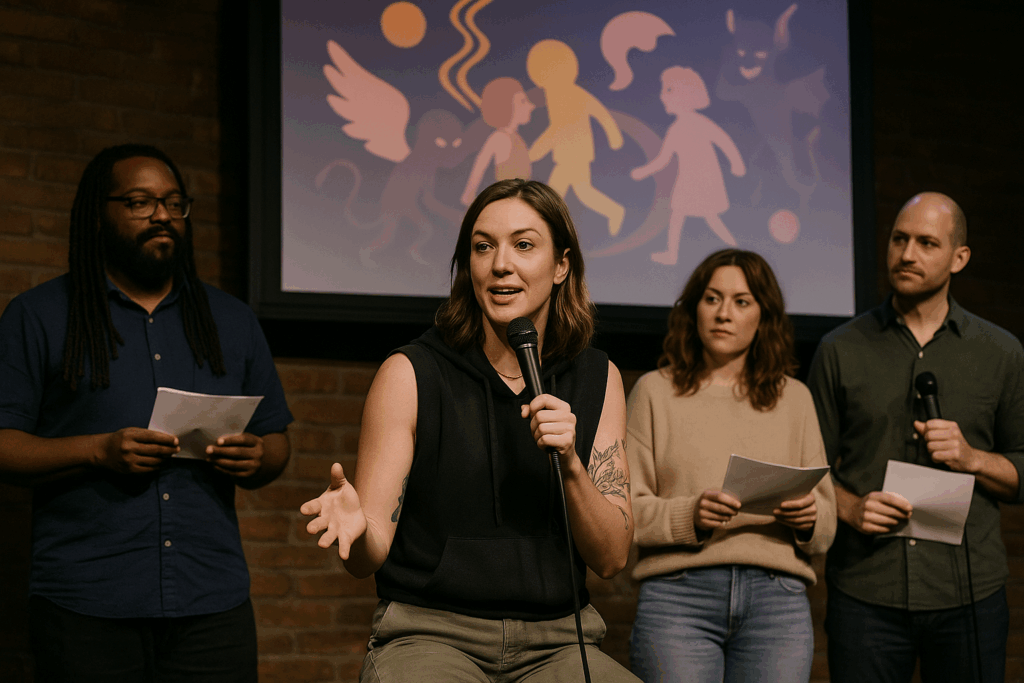It’s early morning, and my mind’s already flying. Not metaphorically but almost literally, because Microsoft 365 Copilot just added voice chat.
Now you can press a button, speak, and Copilot listens and talks back. It works like magic in the car. I don’t even care what Siri does anymore. When it comes to work, Copilot is my new front-seat partner. As long as you’ve got the paid M365 version and switch the little toggle from web to work, you can ask things like, “What’s on today’s schedule?” or “How’s my day tomorrow?” It feels oddly human. I haven’t tried booking an appointment by voice yet, but I will.
And I’m proud, because this isn’t just another product update. It’s personal. Our team recently earned Microsoft’s brand-new Copilot Specialization, and the timing couldn’t have been more poetic. We started the journey before summer, aiming for mid-October, and on exactly October 15, the green light arrived. Right on schedule.
For a company not yet known for AI firsts, this matters. My peers manage portfolios thirty years in the making. Mine’s the newest kid at the table. So every milestone counts. I’m grateful for the customers, coworkers and partners who helped us get here. One from a large multinational telco, another from a social housing corporation in the east, and our Belgian friends who made it international. Together, we built something real.
Intrusive Thoughts and Stage Fights
Maybe it’s the irony of calling it Copilot. After the tech pride comes the human side, the one that never quite stays on autopilot.
Lately I’ve been thinking about intrusive thoughts, ever since hearing one of Jordan Jensen’s stand-up on the spot about the strange images that flash across the mind. Those brief, absurd scenes you’d never act on. Her dark, quick humor hit me harder than expected. It reminded me how even comedy can be a form of therapy, a way of taking control of the cockpit again.
Ever since, I’ve noticed my own mini-movies more clearly. They’re not violent, just cautionary. The kind of thoughts that make me double-check the seatbelt or slow down near a kid on a bike. Or, like today, when our seven-year-old is playing outside with two neighborhood friends. We don’t have eyes on their playing field, and her smartwatch isn’t charging. So my mind jumps to worst-case scenarios—getting lost, hurt, or worse. Then I breathe, remind myself she’s safe, and let the thought pass.

Maybe that’s how I’ve inherited my father’s “doom-thinker gene.” The difference is, he tends to believe and behave as if the bad thing already happened. I just treat it as a safety rehearsal.
It connects back to a biweekly Toastmasters-style program I once ran called Stagefighters. Part stage fright. Part cage fight. We made people improvise presentations from random slides and nonsense words. Awkward at first, but liberating. You learn to stay calm when logic evaporates. You learn to talk sense into chaos. In hindsight, it was training for exactly this: piloting your mind when life throws absurd slides at you.
Symbols and the Compass in Plain Sight
As my thoughts looped from Copilot to Jensen to childhood caution, another theme returned that’s been circling me for weeks. Things hidden in plain sight.

Sometimes they’re not secret societies or symbols at all. They’re everyday emblems that carry stories. Like the Bilderberg Hotel, where I once spoke at an event and left with a branded water bottle. The hotel itself is separate from the Bilderberg meetings, yet the name always carries a quiet echo of those historic meetings. A small artifact from a place famous for global whispers. It’s not that I strongly believe in many conspiracies. It’s that symbols speak, if you’re willing to listen.
Maybe that’s why I keep noticing patterns. In tech logos, in architecture, in the rhythm of my own routines. We build meaning into everything. Even the Copilot icon, that small infinity loop, feels like a modern compass. It reminds me that guidance doesn’t have to be loud. It can live quietly in a button, a joke, a thought, or a bottle you accidentally bring to the supermarket.
Whether it’s Microsoft’s AI or the strange workings of the subconscious, something is always co-piloting us. It helps us navigate between control and chaos, reason and imagination.
And perhaps the real trick is learning, at last, to trust both voices.
What's on your mind?